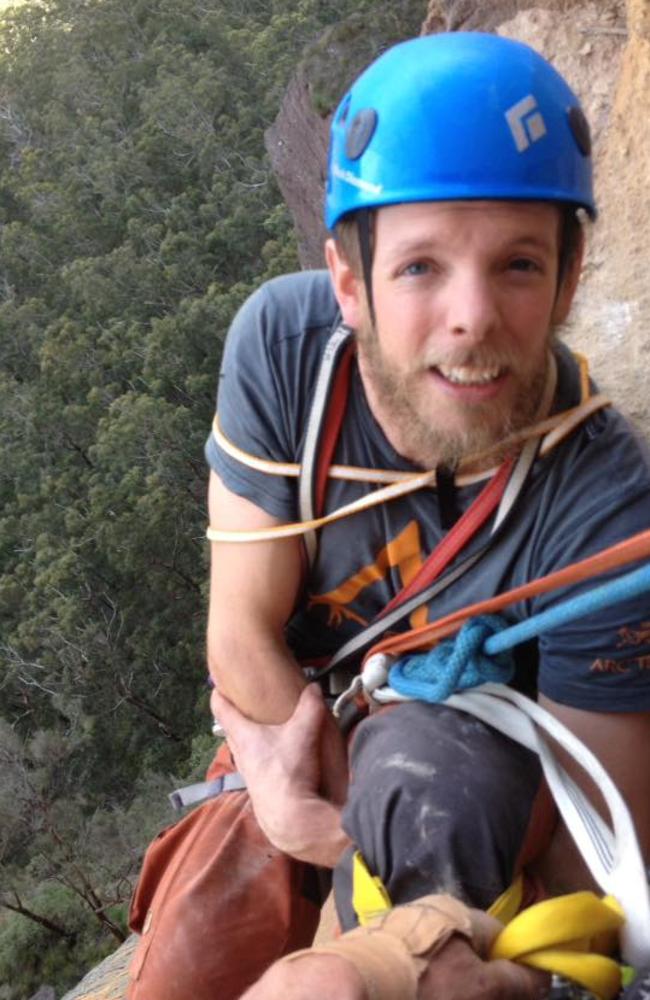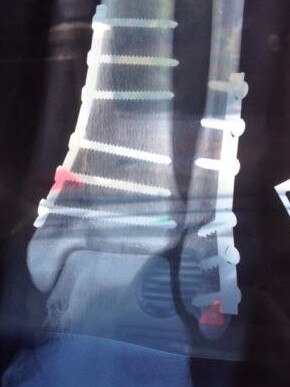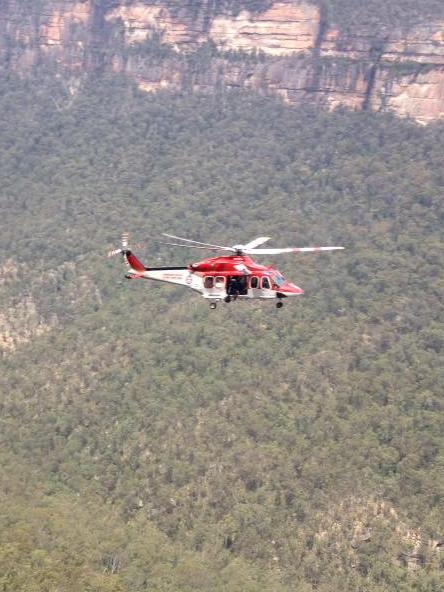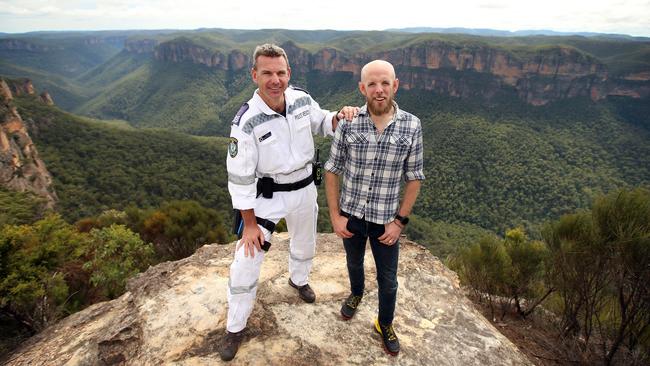Eight hour operation inspires paramedic to chase rescuer’s job
Teetering on the edge of a 200-metre cliff face in the Blue Mountains, Chris Monaghan glanced down and saw his mangled foot twisted in the wrong direction after falling seven metres while rock climbing. After a long, dramatic rescue, he is inspired to become a special operations paramedic.
Teetering on the edge of a 200-metre cliff face in the Blue Mountains, Chris Monaghan glanced down and saw his mangled foot twisted in the wrong direction.
After falling seven metres while rock climbing, he landed heavily on a ledge and the impact snapped his ankle so severely, the bone had pierced his skin.
“I was just thinking I don’t want to lose my foot,” he said. “I could see the bone sticking out and that it was pretty deformed.”
More than two years after the horrific injury, and the delicate eight-hour rescue operation to save him, the 33-year-old experienced rock climber is preparing to run a 160-kilometre ultra marathon in Finland.

MORE FROM AVA BENNY-MORRISON
CHRISTCHURCH GUNMAN’S FAMILY OPENS UP: ‘WE’RE SO SORRY’
SNITCH: REPORTER IN PAEDOPHILE RING TRIES TO START NEW LIFE
‘PEOPLE WOULD RATHER DIE THAN TELL PARENTS THEY’RE ON DRUGS’
This is despite having 12 screws and a plate in his ankle and after a surgeon told him he’d probably never run again.
Mr Monaghan, who works as a paramedic in Richmond, also has his eye on becoming a special operations paramedic, the elite kind that helped save him in November 2016.
Special operations paramedics are trained in vertical and swift water rescue, bush survival and are the go-to teams for natural disasters and major incident responses.
On the morning of November 19 in 2016, Mr Monaghan and a climbing partner abseiled down the cliff face at Pierces Pass, near the town of Bell, in the Blue Mountains.
Mr Monaghan had climbed about 80 metres when he fell and came down hard on a rock ledge.


“When I’ve taken bigger falls than that before it’s fine, you fall into space and the rope catches you,” he said. “But I hit this ledge on my left leg and I blacked out”
“The next thing I remember I’m coming to, looking at my foot and I screamed a bit. My mate (climbing partner) gave me a bit of slack to pendulum across to where the anchor, (a bolt put in the rock or a piece of equipment a climber can pass a rope through) was.”
Mr Monaghan, who activated his personal locator beacon, managed to lay down on a tiny rock ledge — “no bigger than half a butt cheek” — and waited there for almost three hours while the Blue Mountains Police Rescue Squad figured out how to reach him.
The squad responded to more than 900 jobs in the Blue Mountains alone last year, including 14 cliff retrievals and 234 rescues.

“Any job where it’s half way down that cliff face, it’s going to be a big job,” Rescue Squad Sergeant Dallas Atkinson said.
“The biggest complication with it was the fact they were under this big overhang and the cliff is not flat.”
When Sgt Atkinson abseiled down, he was in line with Mr Mongahan but suspended in the air about 20 metres out from the rock. With the bottom of the cliff 100 metres below him, Sgt Atkinson had to throw a rope to where Mr Mongahan was stuck.
The entire rescue operation took eight hours. “It’s never quick,” said Sgt Atkinson, who has been in the rescue squad for 12 years. “It’s slow, it’s calculated and it has to be.”
Mr Monaghan needed 20 stitches, 12 screws in his ankle and was off his foot for “a good 10 months”.
After relocating from the country to Richmond Ambulance Station, Mr Monaghan now finds himself responding to jobs with the people who helped rescue him.



